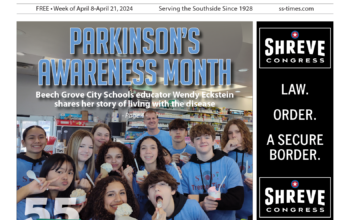By Wendell Fowler
We’ve all watched sidesplitting viral videos of folks eating month-searing peppers: one minute they’re a badass; the next they’re bug-eyed writhing, sweating uncontrollably, a flood of tears flowing down their rosy cheeks while chugging milk.
Eaten daily by a quarter of earth’s population, hot peppers are used for both flavor and medicine. Here in Indiana, meh, not so much because we weren’t exposed to them in childhood. And that’s why most Hoosiers don’t like spicy food. But here’s why there are brave souls who eat them with gusto.
Although peppers are often considered to be vegetables, they are actually fruits. Jalapeno, serrano, habanero, poblano and ghost peppers are what we mostly see at the grocers.
The today show reported Habaneros are one of the hottest varieties, meaning they contain plenty of capsaicin in their seeds, which inhibit substance P, a neuropeptide that causes inflammation. Its anti-inflammatory properties help with arthritis, fibromyalgia and psoriasis. Capsicum also helps relieve stomach issues, back pain, muscle spasms, headaches, peptic ulcers and menopausal problems. Their capsaicin may help prevent heart disease, diabetes, lower cholesterol and blood pressure and help prevent a gene that causes contracting arteries from taking action. Some attribute capsaicin in a meal lowers insulin produced after the meal. Capsaicin also stimulates the temple to produce endorphins, a natural pain reliever that makes you feel happy.
Chipotle peppers, made of smoked, ripe jalapeños, contain phytonutrients lutein and zeaxanthin that help reduce the risk of age-related macular degeneration and cataracts, according to the American Optometric Association.
Mouth-numbing hot peppers are generally high in vitamin C and antioxidants. One ounce of sliced jalapeño peppers hold about 40 milligrams of vitamin C, 66 percent of your daily requirement. They are also a good source of dietary fiber, vitamin E, B6 and folate.
Learn from the burn: When capsaicin contacts nerve endings it trips a pain receptor, known as TRPV1, designed to keep us from doing dumb things like picking up a burning 4th of July sparkler with our bare hands, or biting into something so hot it would physically damage our mouths. We must eventually accept that Earth is the supreme pharmacist.
For those adventurous souls who may not know, if you eat or drink dairy products right after an encounter with a fiery pepper, they’ll help quench some of the heat in your mouth better than water.
Chef Wendell is a public speaker and syndicated food writer. To book Chef for your social organization, school, or business: chefwedellfowler@gmail.com

